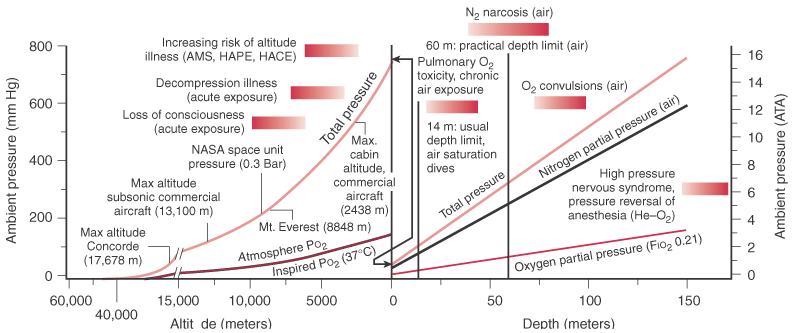 |
 |
Figure 70-2
Ambient pressure as a function of altitude and water
depth. Whereas ambient pressure increases linearly with depth, pressure and altitude
are not linearly related. As air is inspired and humidified, there is a small and
usually insignificant drop from atmospheric PO2
to inspired PO2
. At altitude, however,
this decrease accounts for a greater proportion of the total ambient pressure. The
O2
partial pressure line in the water is shown for a constant FIO2
of 21%. At increasing depth, the inspired PO2
eventually exceeds the pulmonary toxic limit (≅14 m in depth) and the central
nervous system toxic limit (≅70 m in depth). The threshold for high-pressure
nervous syndrome and pressure reversal of anesthesia (observed in non-narcotic atmospheres)
is around 150 to 200 m in depth. The shaded red bars
represent the depth or altitude ranges over which risk progresses from low (light
shading) to high (dark shading). AMS,
acute mountain sickness; HACE, high-altitude cerebral edema; HAPE, high-altitude
pulmonary edema.

 |
